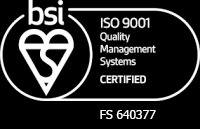A Beginner’s Guide to Small Business Marketing: Simple Strategies to Get Started
Starting a small business is exciting, but figuring out how to get your name out there can feel overwhelming. With so many marketing options – social media, email campaigns, content marketing, SEO – it’s easy to get lost in the noise.
Marketing doesn’t have to be complicated or costly, especially when you’re just starting.
In this guide, we’ll break down some simple, actionable steps to help you build a solid marketing foundation for your small business.
1. Know Your Audience
Before you can market anything, you need to know who you’re marketing to. It sounds obvious, but a lot of small businesses skip this step and end up trying to appeal to everyone, which rarely works.
Think about who your ideal customer is. Who would benefit most from your product or service? What are their pain points? What are their buying habits? Here are a few questions to get you started:
- Demographics: What’s their age, gender, location, and income level?
- Interests: What do they care about? What problems are they trying to solve
- Where they hang out: Are they on Instagram, LinkedIn, or do they prefer email newsletters?
Once you understand your target audience, you can tailor your message to speak directly to them. Your marketing will be way more effective this way.
2. Build Your Brand Identity
Your brand is more than just a logo – it’s the personality of your business. It’s how you communicate who you are, what you do, and why people should care. When developing your brand identity, think about:
- Your voice: Is it casual and fun, or formal and professional?
- Your visuals: What colours, fonts, and imagery represent your brand?
- Your story: What’s your “why”? Why did you start this business, and how are you helping your customers?
Consistency is key here. The more consistent your branding is across all platforms, the more recognisable and trustworthy your business will become.
3. Create a Simple Marketing Plan
You don’t need a fancy, 50-page marketing strategy. A simple plan will do the trick, especially in the beginning. Start with these key components:
- Goals: What do you want to achieve with your marketing? Maybe you want to increase website traffic, grow your social media following, or boost sales. Be specific and set clear targets.
- Budget: Decide how much you’re willing to spend on marketing each month. This includes paid ads, social media tools, email software, or even hiring help when needed.
- Channels: Focus on 2–3 marketing channels to start. It could be social media, email marketing, or content creation like blog posts or videos. Don’t try to be everywhere at once – you’ll spread yourself too thin.
Start small, see what works, and scale from there.
4. Social Media
Social media is a powerful tool, but it can also feel like a full-time job. If you’re a small business owner, you probably don’t have hours to spend on Instagram or TikTok.
Pick one or two platforms where your audience spends the most time, and focus your efforts there. Post consistently, engage with your followers, and use each platform’s tools (like stories, reels, or live videos) to connect with your audience.
Schedule your content in advance to save time. There are plenty of free tools like Buffer or Later that let you plan and automate your posts.
5. Build an Email List
If there’s one marketing tool that has stood the test of time, it’s email. Your email list is one of the most valuable assets you can have- it’s a direct line of communication to people who are genuinely interested in your business.
Start building your email list from day one. Offer a free resource or discount in exchange for people signing up, and keep in touch by sending out regular newsletters or updates. The key is to provide value, whether it’s sharing tips, special offers, or behind-the-scenes looks at your business.
6. Create Valuable Content
Content marketing isn’t just about selling – it’s about helping. When you provide valuable content that solves problems or answers questions, you build trust with your audience. That trust eventually translates into sales.
Here are a few simple content ideas to start with:
- Blog posts: Share industry tips, how-tos, or customer success stories.
- Videos: Create short tutorials or behind-the-scenes videos about your products or services.
- Social posts: Post quick tips, fun facts, or showcase customer reviews and testimonials.
The key is consistency. Whether you’re writing a blog post once a week or posting a quick video on Instagram, regular content will help keep your audience engaged.
7. Track Your Results
Marketing is all about testing, learning, and adjusting. The important thing is to track what’s working and what’s not.
Set up basic analytics tools to monitor your results. Google Analytics is a great place to start for tracking website traffic, and most social media platforms have built-in insights to see how your posts are performing.
Once you start seeing what’s driving results, do more of that. And don’t be afraid to pivot if something isn’t working.
Final Thoughts
Marketing your business doesn’t have to be overwhelming. By focusing on your audience, building a strong brand, and creating a simple plan, you can start seeing real results without burning yourself out.
Remember, you don’t need to do everything at once. Start small, stay consistent, and watch your business grow!
View our Solutions:
Solutions





